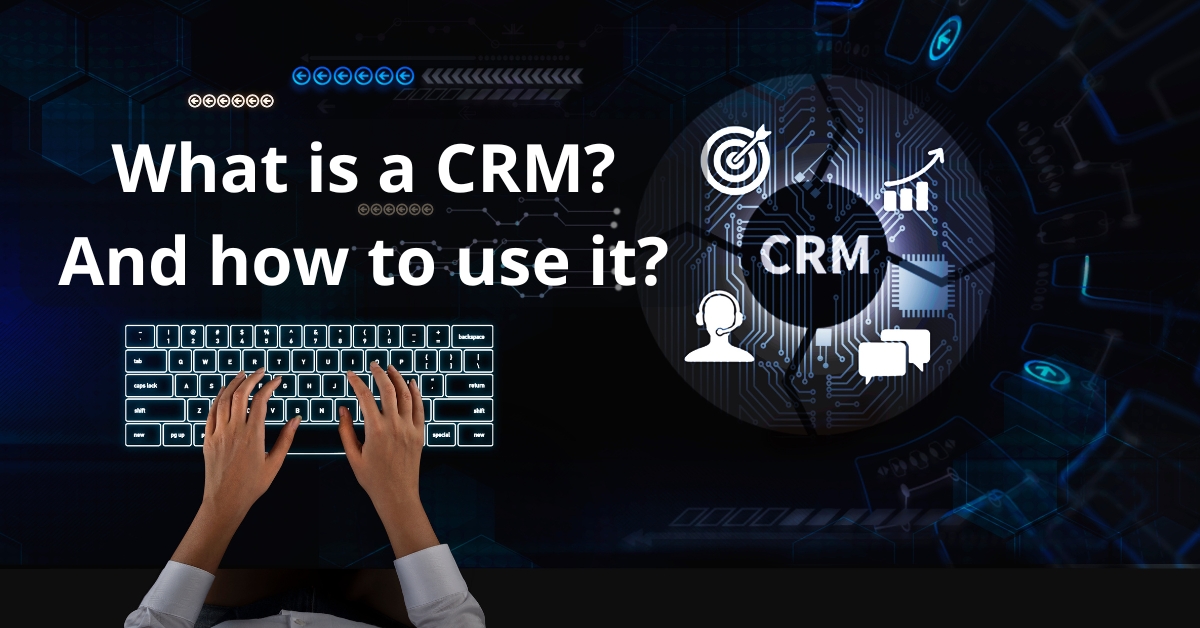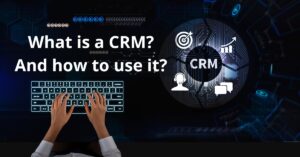Introduction
If you’ve ever wondered, “What is a CRM system?” you’re in the right place. I remember the first time I tried to navigate the world of CRM (Customer Relationship Management) systems, and it felt like I was drowning in a sea of information. But once I got the hang of it, I realized just how indispensable these tools are for businesses. Whether you’re a seasoned marketer or just starting out, understanding and effectively using a CRM system can revolutionize the way you manage customer relationships and drive business growth.
What is a CRM System?
What is a CRM system? A CRM system is software designed to manage a company’s interactions with current and potential customers. It uses data analysis to improve business relationships, focusing on customer retention and driving sales growth. The system compiles data from a range of different channels, including a company’s website, telephone, email, live chat, marketing materials, and social media. CRM systems can also give staff detailed information on customers’ personal information, purchase history, buying preferences, and concerns.
Why You Need a CRM System
From my experience, having a CRM system in place is like having a personal assistant who never forgets anything. Here are some compelling reasons to consider a CRM system:
- Centralized Information: No more digging through emails or spreadsheets to find customer details.
- Improved Customer Service: With all customer interactions logged in the CRM system, your team can provide timely and personalized support.
- Enhanced Communication: Automated follow-ups and reminders from the CRM system ensure that no lead is left unattended.
- Data-Driven Decisions: CRM systems provide valuable insights into customer behavior, helping you make informed decisions.
- Increased Efficiency: Automating routine tasks with a CRM system frees up time for more strategic activities.
Types of CRM Systems
Understanding the types of CRM systems available is crucial in choosing the right one for your business. Here are the three main types:
Operational CRM
Operational CRM focuses on streamlining business processes and improving efficiency. It includes sales automation, marketing automation, and service automation. This type of CRM is great for managing customer interactions and tracking leads through the sales funnel. If you’ve ever asked yourself, “What is a CRM system that can help with daily operations?” operational CRM is the answer.
Analytical CRM
As the name suggests, this type focuses on analyzing customer data to gain insights. It helps in understanding customer behaviors, preferences, and trends. Businesses use this type of CRM to make data-driven decisions and refine their marketing strategies. Analytical CRM is essential for answering the question, “What is a CRM system that can provide deep insights into customer data?”
Collaborative CRM
Also known as strategic CRM, it focuses on improving communication and collaboration among various departments (sales, marketing, customer service) to enhance customer satisfaction and loyalty. This type is ideal for businesses that value teamwork and customer feedback. If you’re wondering, “What is a CRM system that fosters collaboration?” collaborative CRM is what you need.
Popular CRM Systems
There are numerous CRM systems available, each offering unique features. Here are some of the most popular ones:
- Salesforce: Known for its robust features and customization options. Ideal for large businesses and enterprises.
- HubSpot CRM: Offers a free version with essential features, making it perfect for small businesses and startups.
- Zoho CRM: Provides a good balance of features and affordability, suitable for small to mid-sized businesses.
- Microsoft Dynamics 365: Integrates well with other Microsoft products, great for businesses already using the Microsoft ecosystem.
- Pipedrive: Focuses on sales pipeline management, making it ideal for sales-driven organizations.
How to Use a CRM System
Using a CRM system might seem daunting at first, but trust me, it’s easier than it looks. Here’s a step-by-step guide based on my journey:
1. Choose the Right CRM
Not all CRM systems are created equal. You need to find one that fits your business needs. Here are some tips for selecting the right CRM system:
- Define Your Needs: Identify what features are essential for your business. Do you need a CRM with robust marketing tools or one focused on sales automation?
- Consider Usability: Choose a user-friendly CRM system that your team can easily adopt.
- Scalability: Ensure the CRM system can grow with your business.
- Integration: Check if the CRM system integrates with your existing tools (email, calendar, accounting software, etc.).
2. Set Up Your CRM
Once you’ve chosen your CRM system, the next step is setting it up. Here’s how I did it:
- Import Data: Start by importing your existing customer data. Most CRM systems allow you to import data from spreadsheets, email contacts, or other CRM systems.
- Customize Fields: Tailor the CRM system to fit your business by adding custom fields that capture the information unique to your operations.
- Automate Workflows: Set up automated workflows for routine tasks like follow-up emails, appointment scheduling, and lead assignments.
- Train Your Team: Ensure your team knows how to use the CRM system effectively. Many CRM providers offer training resources and support.
3. Using the CRM Daily
Here’s how I use my CRM system on a daily basis to stay organized and efficient:
- Log All Interactions: Make it a habit to log every interaction with customers in the CRM system. This ensures that all team members have access to the latest information.
- Monitor Your Dashboard: Your CRM system’s dashboard gives you an overview of your sales pipeline, upcoming tasks, and customer interactions. Keep an eye on it to stay on top of your activities.
- Use Reminders and Alerts: Set reminders for follow-ups and deadlines within the CRM system. This ensures you never miss an important task.
- Analyze Reports: Regularly review CRM reports to gain insights into customer behavior, sales performance, and team productivity. Use these insights to refine your strategies.
Tips and Tricks for Maximizing CRM Efficiency
From my own experience, here are some tips and tricks to get the most out of your CRM system:
- Segmentation: Segment your contacts in the CRM system based on criteria like industry, job role, or behavior. This allows for more targeted marketing and personalized communication.
- Lead Scoring: Implement lead scoring in the CRM system to prioritize leads based on their likelihood to convert. Focus your efforts on high-scoring leads to improve conversion rates.
- Email Templates: Use email templates within the CRM system for common responses to save time. Customize them as needed to keep your communication personal.
- Integrate with Other Tools: Integrate your CRM system with other tools like email marketing software, accounting systems, and e-commerce platforms to streamline your workflow.
- Mobile Access: Choose a CRM system with a mobile app so you can access customer information and manage tasks on the go.
Common Challenges and How to Overcome Them
Despite their benefits, CRM systems can present challenges. Here are some common issues I’ve encountered and how to overcome them:
- Data Entry: Keeping data up-to-date in the CRM system can be tedious. Use automation tools to reduce manual entry and ensure data accuracy.
- User Adoption: Getting your team to use the CRM system consistently can be a hurdle. Provide training and highlight the benefits to encourage adoption.
- Customization: Over-customizing the CRM system can make it complex. Focus on essential customizations that enhance usability without cluttering the system.
- Integration Issues: Sometimes, integrating your CRM system with other tools can be tricky. Work with your IT team or CRM support to resolve integration challenges.
Conclusion
Investing in a CRM system can significantly enhance your business operations and customer relationships. By choosing the right CRM system, setting it up effectively, and using it daily, you can streamline your processes and make data-driven decisions. Remember, the key to success with CRM is consistency. Make it an integral part of your business routine, and you’ll start seeing the benefits in no time.






